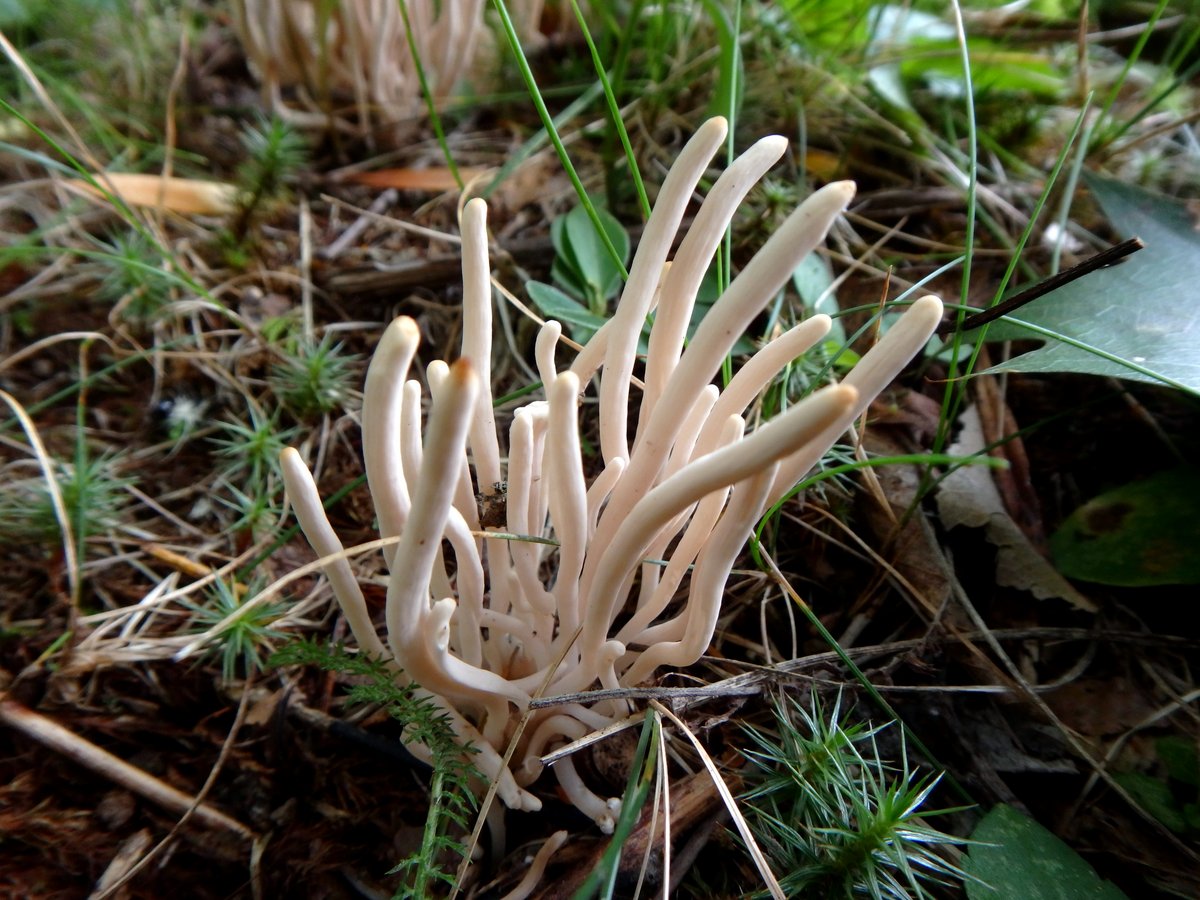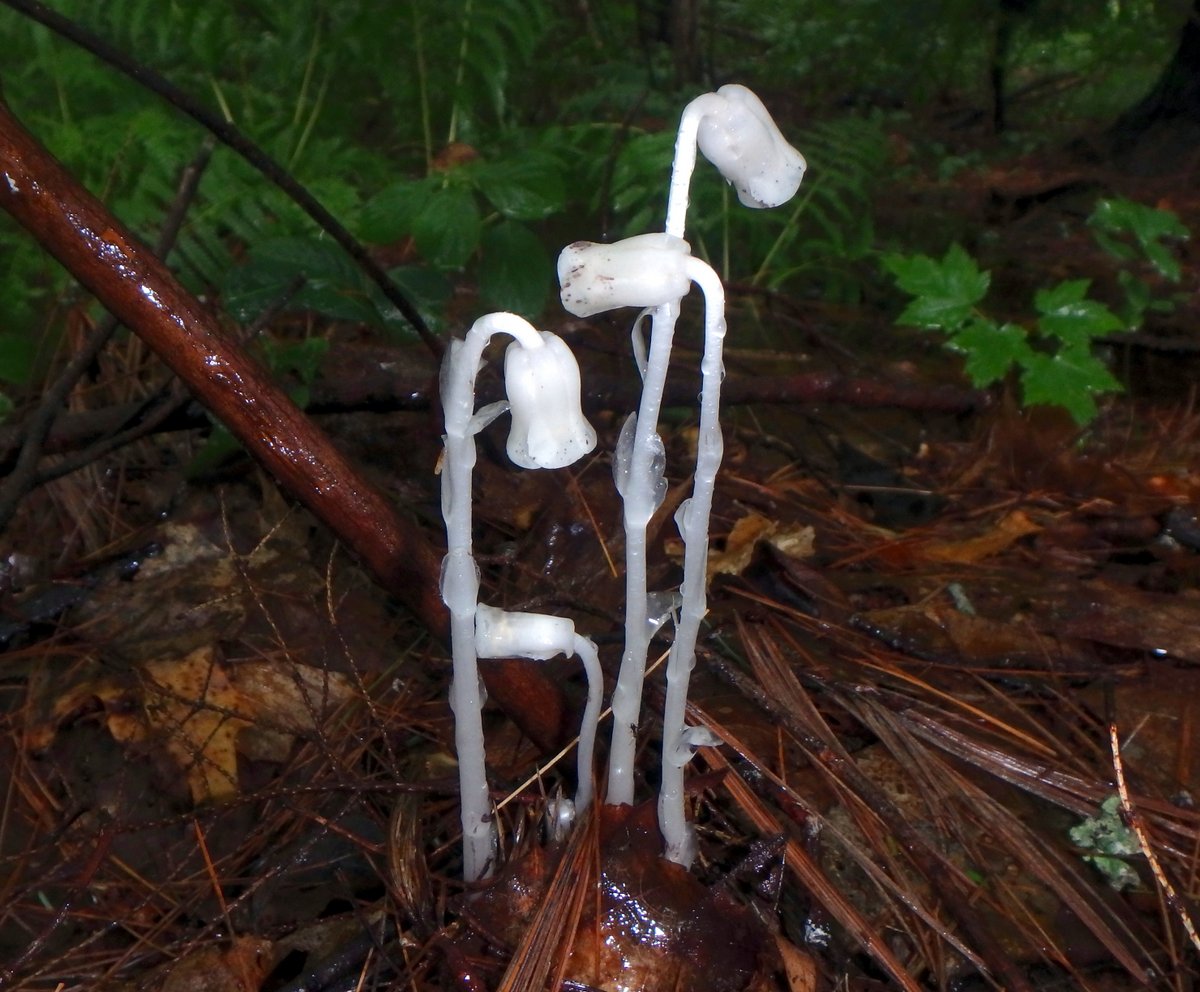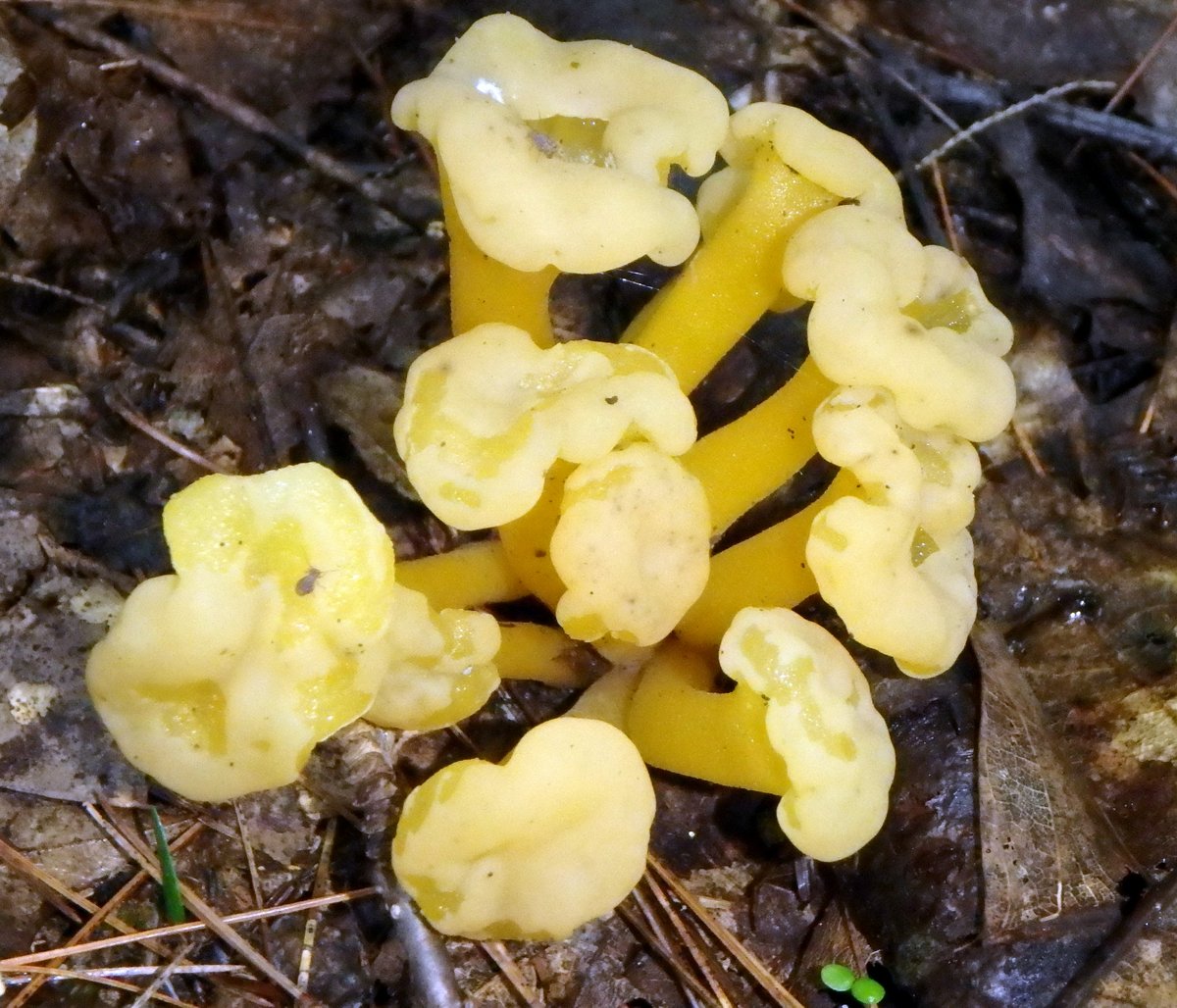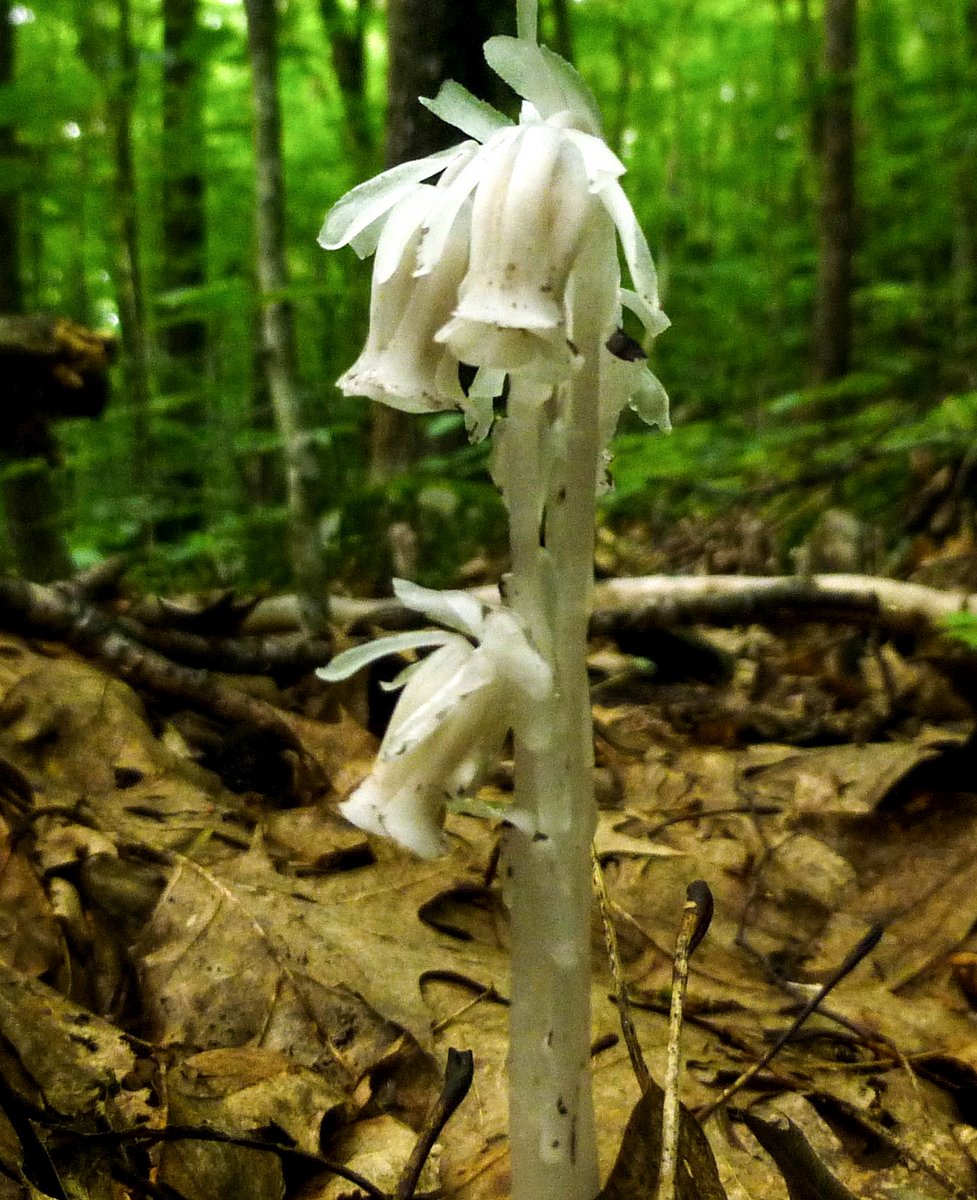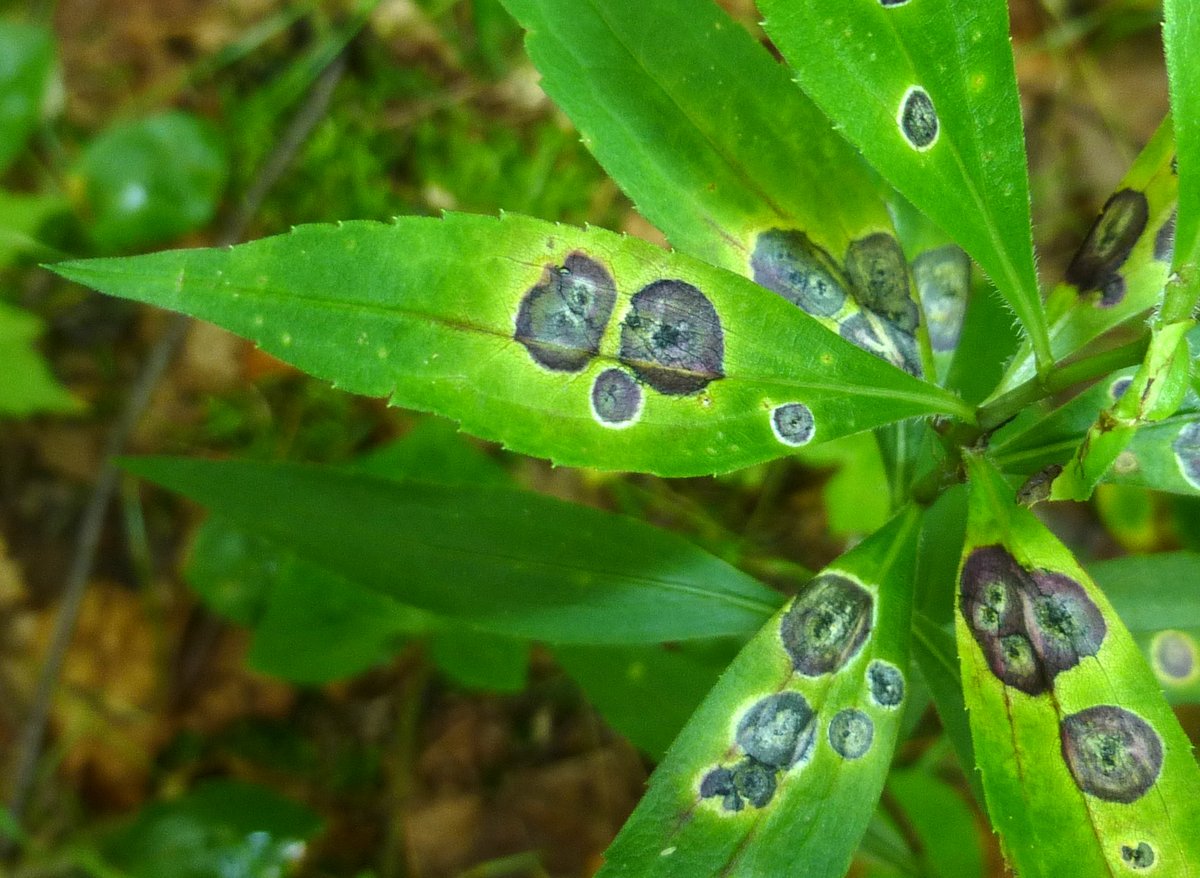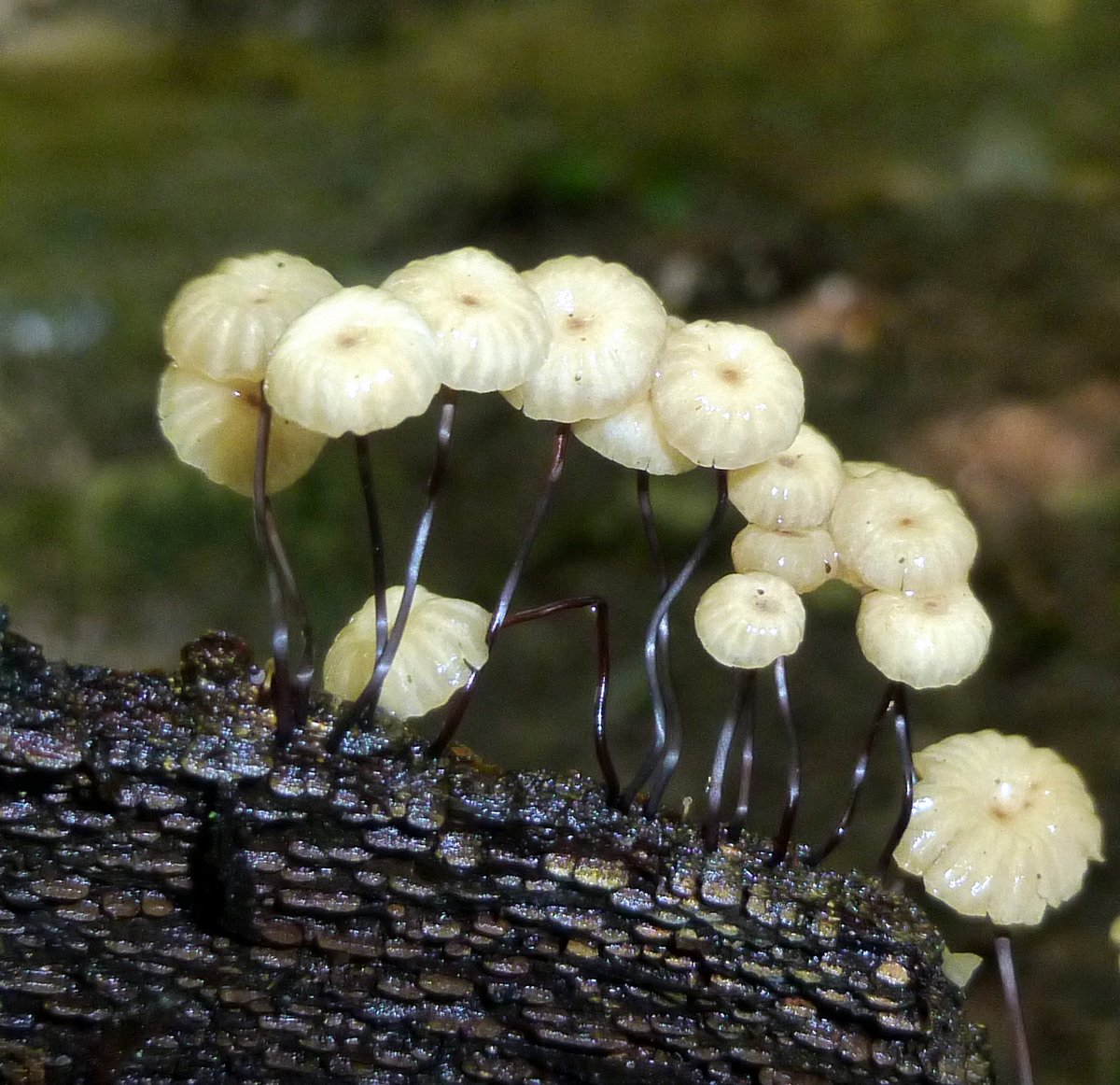
Last Saturday I realized that I hadn’t climbed Mount Caesar in Swanzey this year so I decided it was time, but not that day; it was near 90 degrees with air so thick you could cut it with a knife. By Sunday morning it had cooled off considerably with very low humidity, but as this photo shows there was plenty of mist.

I was hoping I’d get to see the mist from above but the sun had burned it off by the time I got to the river of reindeer lichen. This is one of my favorite places to stop for a bit on this mountain, though you really haven’t even started the climb at this point.

There are lots of reindeer lichens (Cladonia rangiferina) here. Huge drifts of them line both sides of the trail at its start. These lichens are quite fragile, especially when dry, and should never be walked on. Reindeer lichen is very slow growing at about an eighth to three eighths of an inch per year and if overgrazed or dug up, it can take decades to reappear. I’ve always thought that the large colonies found here must be hundreds of years old.

The trail starts with granite bedrock.

Trailing arbutus (Epigaea repens) reminded me of my grandmother. When I was young she wanted me to be able to see and smell this plant’s flowers, but we never did find any because almost all of it had been picked. Now, 60 years later. It’s everywhere I go. She’d be very happy about that.

Lady ferns (Athyrium filix-femina) are one of the earliest to turn in the fall but I’ve never seen one half turn like this one had.

Wild sarsaparilla (Aralia nudicaulis) was wearing its fall spots. This is one of the earliest plants to whisper fall in any of the forests I visit, and it is often spotted with yellow at this time of year.

My phone camera usually takes better trail photos than my regular camera, but on this morning I wasn’t really happy with the results. To be fair though, it was a bright sunlight, high contrast situation and every camera I’ve owned has had trouble with that.

I found these small mushrooms growing out of a living tree, which is never good for the tree. I haven’t been able to identify them. I see green but my color finding software sees pink, so they must be pink. They were kind of cute, I thought. All the sawdust that had fallen on and around them tells me that this tree is probably full of carpenter ants. Fungi and carpenter ants in and on a living tree is never a good thing for the tree.

I saw lots of purple corts (Cortinarius iodeoides) along the trail but the purple mushroom I hoped to find, the beautiful violet coral fungus, was nowhere to be seen. I’ve seen it here before at just about this time of year.

Another “cort” mushroom is the corrogated cap cort (Cortinarius corrugatus.) It is also called the wrinkled cort for obvious reasons. When fresh it is orangey brown but this one had gone beyond fresh. It’s an inedible but interesting mushroom that people like to find.

I can’t pass by a group of butter wax cap mushrooms (Hygrocybe ceracea) without getting some photos of them. They’re one of the most photogenic mushrooms in the forest, in my opinion. Very cute and shy little things; I never would have see them hiding behind this log if I hadn’t left the trail to look at something else. As is often the case if you let nature lead, one beautiful thing will lead you to another.

The trail here is very rough in places and is a constant uphill grade with no level places, so I think of it as the most challenging climb of any I do. I once saw a high school track and field member run up and down it before I had reached the halfway point but it usually takes me about an hour and 15 minutes or so. It would anyway even with healthy lungs, because I make a lot of stops to see things of interest. With me “things of interest” means just about everything I see.

Piling stones on top of a tree that has been cut about 7 or 8 feet above the ground doesn’t seem like a good idea to me, but maybe that’s just me. I hope they don’t fall on anyone.

Once I saw these polypody ferns (Polypodium virginianum) near the summit I realized that I had never seen them on this moutain before. They’re called “rock polypody” because they like to grow on top of boulders and there really aren’t any stones big enough to be called boulders along this trail. These seemed to be growing on the ground, which is unusual for this fern. Or maybe there was a buried stone I couldn’t see.

I always look on the polypody’s leaf undersides at this time of year to see the tiny spore cases (sorus) which shine like beacons. Henry David Thoreau liked polypody ferns and said that “Fresh and cheerful communities of the polypody form a lustrous mantle over rocky surfaces in the early spring.” Of course they do exactly that and that’s how they come by another common name: rock cap fern.

The tiny sori are made up of clusters of sporangia and are naked, meaning they lack the protective cap (indusium) that is found on many ferns. Each will turn a reddish-brown color when ripe and ready to release its spores. The spores are as fine as dust and are borne on the wind. Sorus is from the Greek word sōrós, and means stack, pile, or heap, and each sorus is indeed a round pile of sporangia. As they begin to release spores the sori (plural of sorus) are very pretty and look like tiny baskets of flowers.
NOTE: A helpful reader pointed out that I had my wires crossed and had the meanings of the words sori and sorus backwards. I do know the difference but it’s easy to become confused these days. I hope I got it correct this time and hope my mistake didn’t cause you any confusion.

The end of the trail, the last few yards to the summit, shows more solid granite bedrock and when you reach this point you realize that you’ve been climbing a huge, dome shaped granite monolith with a thin skin of soil on it. It makes you feel small, and feeling small is a good thing now and then.

It was a fine morning for views from the summit but I found that a lot of brush has grown up, so you don’t see a 180-degree panorama any longer.

I was surprised to find little bluestem grass (Schizachyrium scoparium) up here. It caught the light and glowed beautifully pink in the bright sunshine. This is a common grass that grows in every U.S. state except Nevada and Washington, but is so uncommonly beautiful that it is also grown in gardens. After a frost it takes on a reddish-purple hue, making it even more beautiful.

I was surprised to find St. John’s wort (Hypericum perforatum) growing on the summit. I also saw lots of goldenrod, sumac, honeysuckle, and even forked blue curls. It’s amazing how all those seeds find their way up here. I suppose if you knew which birds ate which seeds you could get a good idea of what birds regularly visit this mountain.

This view shows what I mean about the brush blocking some of the view. I’m sure someone must cut it but I don’t know how often.

Of course I had to visit with the toadskin lichens while I was up here. They surprised me by being quite dry, even though we’d had rain just the morning before. These lichens feel just like potato chips when they’re dry and they crack just as easily so I try not to disturb them. I learned on this climb that they dry out quite quickly and I’d guess that they must be dry for most of their lives.

The black dots you saw on the lichens in that previous shot are this lichen’s apothecia, where its spores are produced. In toadskin lichens they are tiny blackish discs with a sunken center that makes them look like a bowl with a thick black rim. I’ve been imagining that I’m having problems with the camera I use for macros, but the toadskin lichens showed me that there was really nothing to worry about. The head of a pin is .06 inches (1.5 mm) in diameter and one these tiny discs could easily hide behind one.

The view of Mount Monadnock over in Jaffrey was as good as any I’ve seen from up here on this day, and I as I sat for a while enjoying it I thought it was a good bonus for all my huffing and puffing. And while I sat there catching my breath and admiring the view, I thought about what an easy thing it is to appreciate the simple things; those everyday things that cost nothing but touch you somehow. I’ve learned from experience that appreciation leads to gratitude, and gratitude leads to joy. I do hope your days are joy filled.
The climb speaks to our character, but the view, I think, to our souls. ~Lori Lansens
Thanks for stopping in.














































































